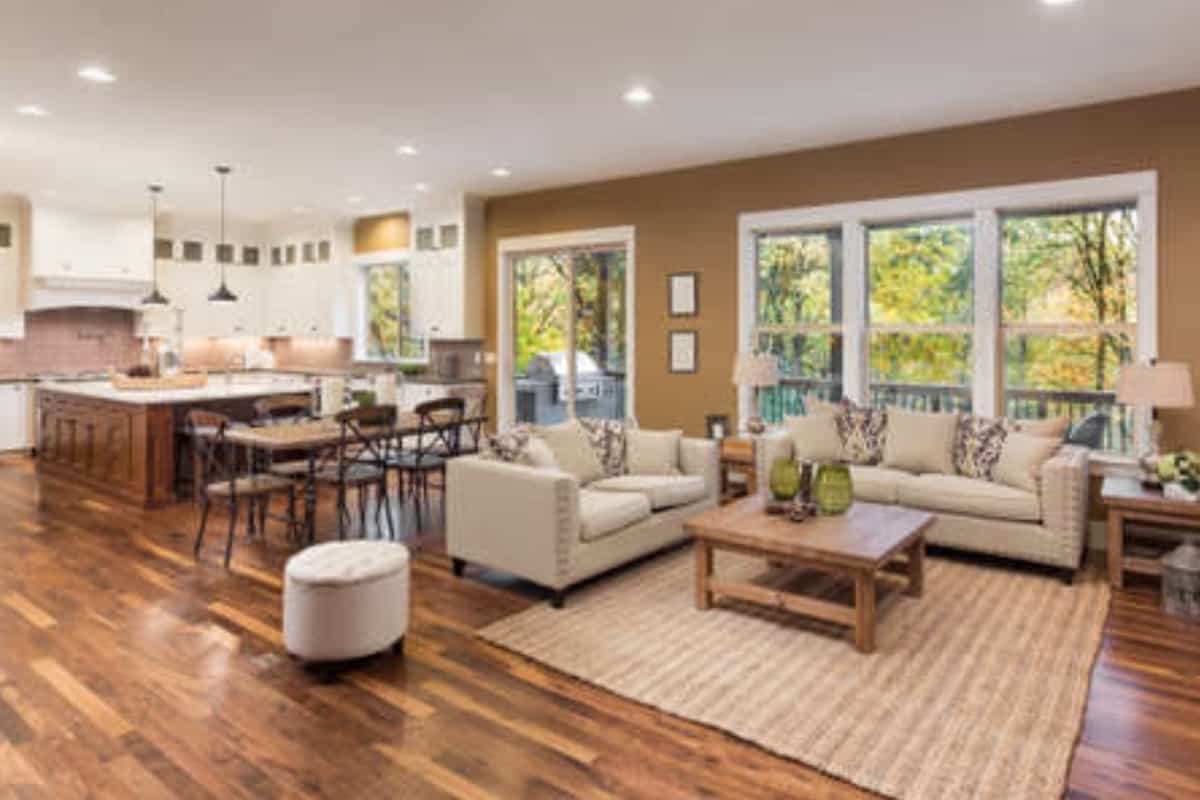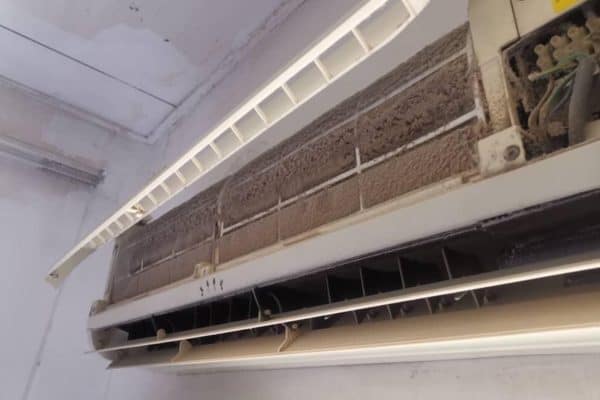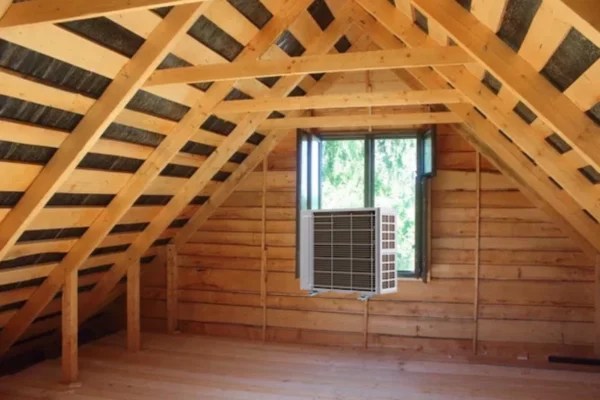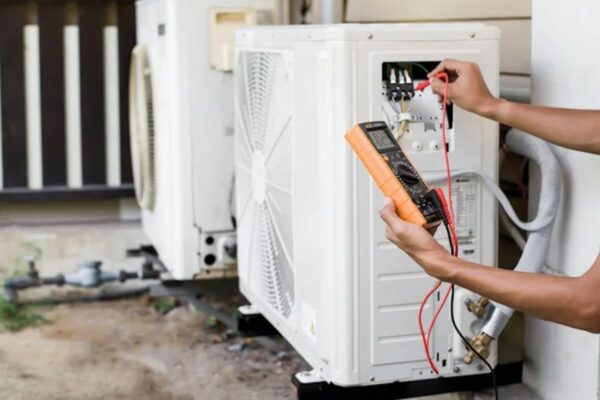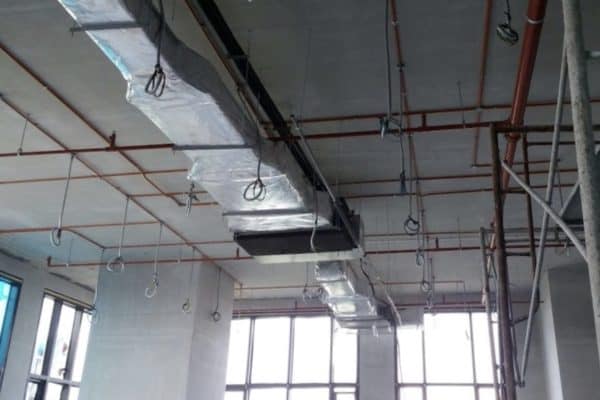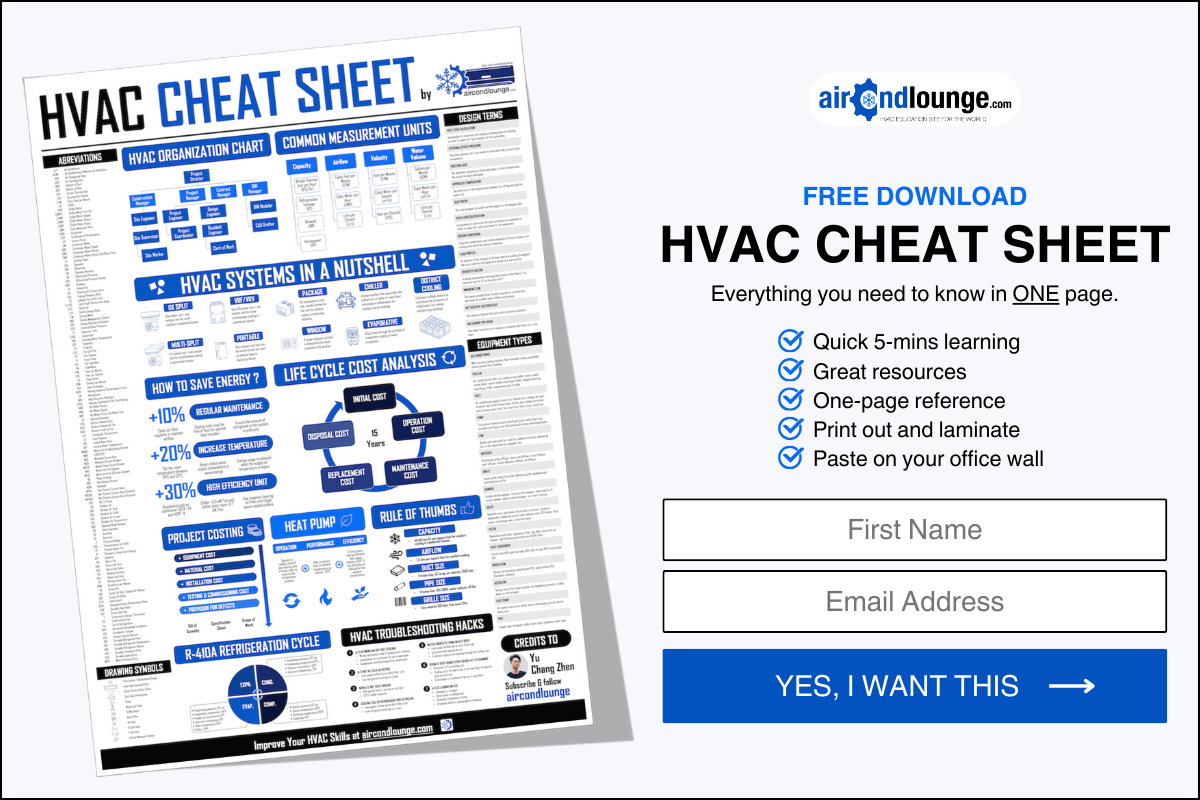Air Conditioner Size for 1500 Square Feet (with Example)
Getting an air conditioner for a large area such as 1,500 square feet can be tricky. So, what size air conditioner should you get for 1500 square feet?
As a rule of thumb, you need 30,000 BTU for 1,500 square feet. So, you need a 2.5 Tons air conditioner for a 1,500 square feet room. If your room is below 1,500 square feet but more than 1,200 square feet, you can use a 2 Tons air conditioner.
A 2.5 Tons air conditioner can be used up to 2,000 square feet.
For a large area such as 1,500 square feet, we can’t just rely on the rule of thumb to decide the air conditioner size. Instead, we should consider the factors that affect the capacity needed.
How to Calculate the Capacity Needed?
Typically, we size a large area such as 1,500 square feet the same as a small area. However, we must include the factors that have significant effects on a large area.
1. How Many Room Need Air Conditioning?
Not every inch of your house needs air conditioning. Most of the time, you need air conditioning in the master bedroom, bedroom 2, bedroom 3, living room, dining room, and perhaps, the corridor/hallway. Hence, we need to calculate the capacity needed for each room.
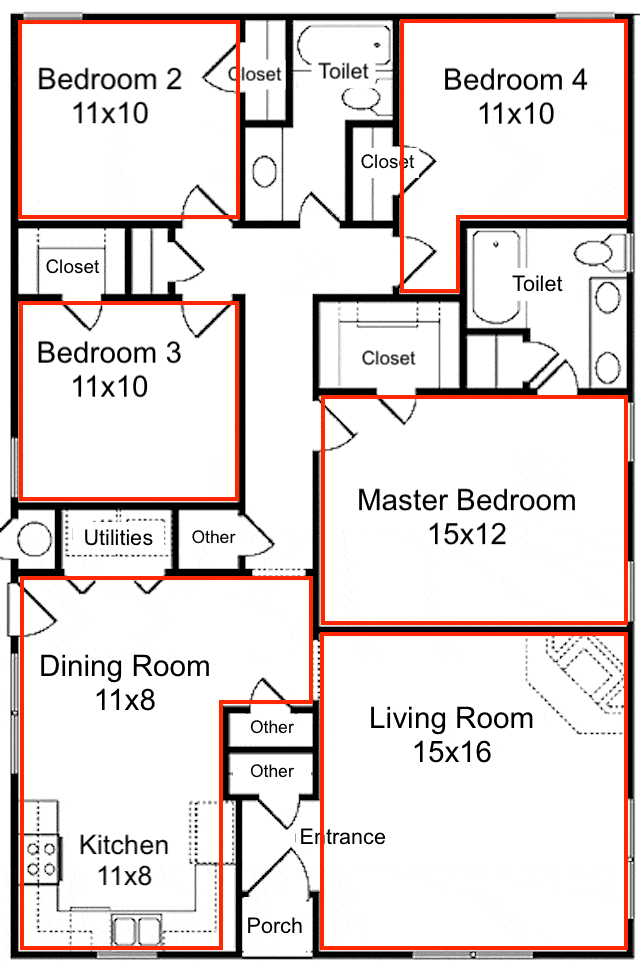
Let’s use the above 1,500 square feet house plan as an example. The following table is the capacity needed for each room:
| Room | Capacity Needed |
|---|---|
| Living Room 15×16 (240 sqft) | 6,000 BTU |
| Master Bedroom 15×12 (180 sqft) | 6,000 BTU |
| Bedroom 4 11×10 (110 sqft) | 5,000 BTU |
| Bedroom 2 11×10 (110 sqft) | 5,000 BTU |
| Bedroom 3 11×10 (110 sqft) | 5,000 BTU |
| Dining Room & Kitchen 22×16 (352 sqft) | 9,000 BTU |
| Total Capacity Needed | 36,000 BTU |
According to Energy Star, 30,000 BTU capacity needed for 1,500 square feet. But, as you can see, the total capacity needed for the 1,500 square feet house is 36,000 BTU.
Therefore, we can’t use the capacity guide for a single area of 1,500 square feet on a 1,500 square feet house with multiple rooms.
If you have rooms with a ceiling height of more than 9 feet, it is recommended to add 1,000 BTU for every additional foot of ceiling height.
2. Is Your Room Very Sunny or Heavily Shaded?
Do any of your rooms is very sunny in the afternoon? Very sunny means that sunlight glazes directly into the room. If the room hardly gets any sunlight, the room is considered heavily shaded. The below photo is an example of a very sunny living room.
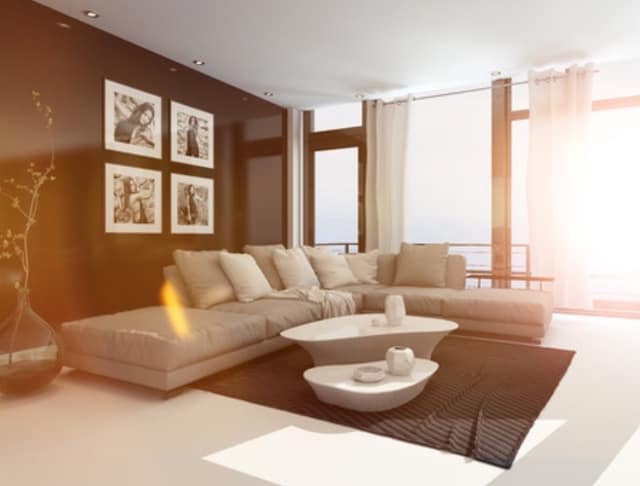
For a very sunny room, we should increase the capacity needed by 10%. For a heavily shaded room, we decrease the capacity needed by 10% as well. Each room should be calculated individually based on how sunny it is.
What if you have thick curtains for the windows? I still recommend you maintain the 10% increase of the capacity needed because you might not want to close the curtains every time you use the air conditioner.
Furthermore, the thickness of the windows and curtains also affect how much solar heat is coming into the room.
3. How Many People in the Room on a Regular Basis?
Every person emits about 600 BTU of heat energy that the air conditioner needs to handle. From the above table, the capacity needed for each room is based on two persons.
Hence, if we anticipate having more people in the room, we need to increase the capacity needed accordingly.
For the living room, I recommend you include the possibility of you having more than 10 people at once because you may throw a birthday party, Christmas party, or hold a family gathering.
You wouldn’t want to have an air conditioner that is just enough for two persons and then, not providing sufficient cooling you are having a party in your house.
4. Are You Using Ducts?
If you are going for a central air conditioner, you most likely will be using ducts to distribute the air. However, ducts inevitably have air leakages. Sheet Metal and Air Conditioning Contractors’ National Association (SMACNA) has a guideline on allowable duct leakages.
Depending on the HVAC contractors, the number of duct leakages can be significantly more especially when you hired a bad contractor. Furthermore, duct insulations also contribute to energy losses.
Thus, I suggest you increase the total capacity needed by 5% or more if you are using a ducted central air conditioner.
5. Do You Have Appliances that Generate Lots of Heat?
Usually, appliances such as the light bulb, TV, refrigerator, and laptop don’t affect too much the capacity needed for each room. However, if you have appliances that generate a significant amount of heat, you may want to include that.
Generally, we take the power consumption of an appliance in kilowatts and multiply it by 3412 to convert it into BTU. Then, you can add BTU to the capacity needed for each room.
6. Are You Living in a Hot Climate Place?
People from different regions have different preferences when it comes to how much is considered as enough cold. Furthermore, some houses are well-insulated, some are badly insulated while others are not insulated.
Thus, we need to consider what is the capacity needed generally in where we live.
For instance, 5,000 BTU may be sufficient for a 150 sqft room in United States but 8,500 BTU is preferred in many places in Southeast Asia due to the majority of the houses are not insulated and hotter climate.
7. Can You Apply Diversity Factor to Your Air Conditioner?
Diversity factor in air conditioning means we assume two or more rooms are not in use concurrently. Back to the above example, the total capacity needed is 36,000 BTU.
What if the master bedroom and living room are not in use at the same time?
Assuming that when the living room is occupied, the master bedroom is not. Thus, we can reduce 6,000 BTU from the total capacity which left us with only 30,000 BTU of capacity needed.
Typical Air Conditioner Size vs Capacity Needed
Air conditioners only have certain BTU. You can’t find an odd numbers such as 7,500 BTU. Hence, we usually take the nearest size air conditioner. You can refer to the below table to choose your air conditioner size:
| Room Size (Square Feet) | Capacity Needed (BTUs per hour) | Air Conditioner Size (Typical) |
|---|---|---|
| 100 up to 150 | 5,000 | 0.75 Ton |
| 150 up to 250 | 6,000 | 0.75 Ton |
| 250 up to 300 | 7,000 | 0.75 Ton |
| 300 up to 350 | 8,000 | 0.75 Ton |
| 350 up to 400 | 9,000 | 0.75 Ton |
| 400 up to 450 | 10,000 | 0.75 Ton |
| 450 up to 550 | 12,000 | 1 Ton |
| 550 up to 700 | 14,000 | 1 Ton |
| 700 up to 1,000 | 18,000 | 1.5 Tons |
| 1,000 up to 1,200 | 21,000 | 1.5 Tons |
| 1,200 up to 1,400 | 23,000 | 2 Tons |
| 1,400 up to 1,500 | 24,000 | 2 Tons |
| 1,500 up to 2,000 | 30,000 | 2.5 Tons |
| 2,000 up to 2,500 | 34,000 | 3 Tons |
Remark: 1 Ton is equivalent to 12,000 BTU. 1 kW is equivalent to 3412 BTU. 1 HP is equivalent to 9,000 BTU.
What Happen If You Choose the Wrong Size Air Conditioner?
Generally, one size bigger air conditioner doesn’t do much harm. If you need a 2.5 Tons air conditioner but you purchased a 3 Tons air conditioner, you probably won’t notice much difference but a faster cooling.
However, if you use a 5 Tons air conditioner instead of 2.5 Tons, your house will be cold and clammy. A significantly oversized air conditioner cools the house very quickly but it doesn’t give sufficient time for dehumidification.
Furthermore, your electricity bill will be higher than it supposed to be.
On the flip side, an undersized air conditioner can lead to insufficient cooling. If you use a 1.5 Tons air conditioner instead of the needed 2.5 Tons, obviously you will not get enough cooling in your house.
Therefore, many HVAC contractors rather recommend a slightly oversized air conditioner than an undersized air conditioner.
What Type of Air Conditioner Suitable for 1,500 Square Feet?
If your house has existing ductwork, it is wise to use back the ducts but make sure to check the condition of the ducts and grilles. So, a ducted air conditioner is suitable for your 1,500 square feet house.
Otherwise, you can opt for ductless mini split air conditioners. However, the lowest capacity of a ductless mini split is often 9,000 BTU.
But, most mini splits have inverter technology that allows them to operate as low as 4,000 BTU. If you opt for the mini split, each room will need one unit.
Besides, you can consider a VRF or multi zones split air conditioner instead of the mini split. Both VRF and multi split are more expensive than the mini split but they offer better energy efficiency and only have one condenser unit which is better looking for your house exterior.
In case you have a tight budget, you may go for multiple window air conditioners. However, bear in mind that they are very noisy.
So, window air conditioners may not be suitable for the bedroom but it is a good choice for living room and dining room.
A portable air conditioner is good if you want to move around it in your house. But, portable air conditioners also very noisy and not suitable for bedrooms.
Lastly, consider my Mini Split (eBook) if you want to know how can you use Mini Split in your house. If you still have doubt or not feeling confident enough, feel free to consult me.
Consultation Service
Ask me for HVAC advice such as brand selection, best model, benefits, features, placement, duct size, grille size, how to design, design check, verification and other HVAC related queries.
If you have anything to add (or ask) about this topic, leave a comment down below!


